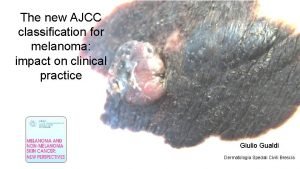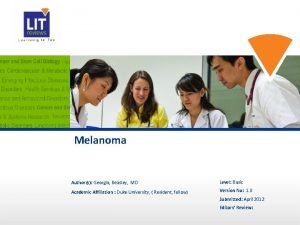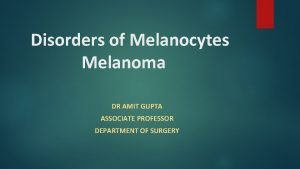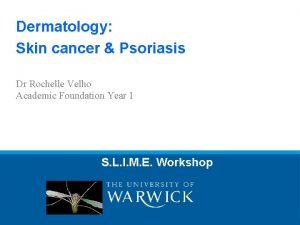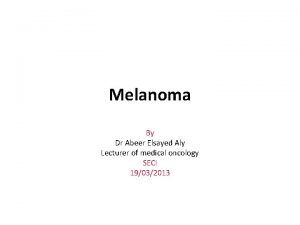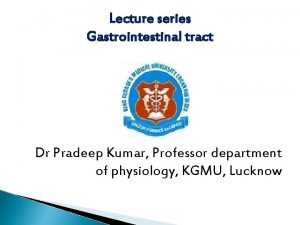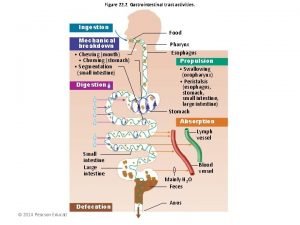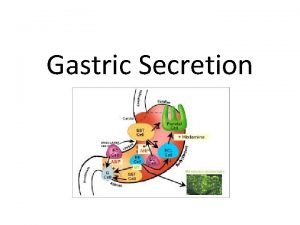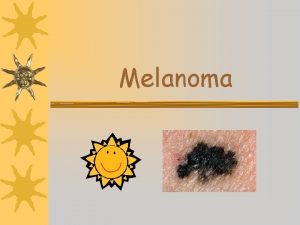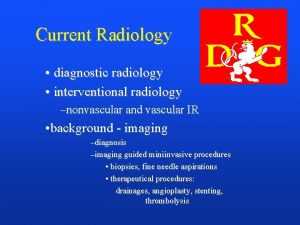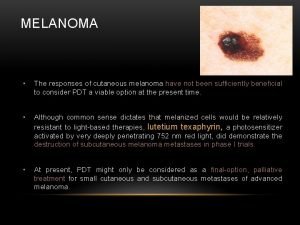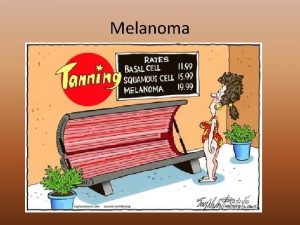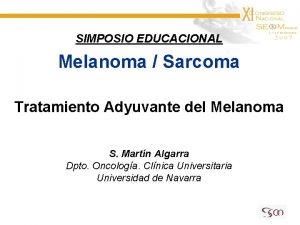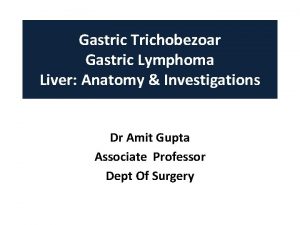GASTROINTESTINAL RADIOLOGY GI 4 Primary gastric melanoma a






















- Slides: 22

GASTROINTESTINAL RADIOLOGY : GI 4 Primary gastric melanoma: a rare localisation. B. Zouita; Z. jamaleddine; FZ. El Gueddari Department of radiology IBN SINA Rabat MORROCO

INTRODUCTION - Primary gastrointestinal malignant melanoma is an unusual clinical entity. Rarer still is primary gastric melanoma. Most melanomas found in the stomach are metastases from cutaneous sources. - Primary gastric melanoma is underdiagnosed, its symptoms and signs are nonspecific, and specific staining techniques must be used to confirm the diagnosis. - We report an other case of primary gastric malignant melanoma.

CASE REPORT (1) � 48 years old man, without medical history. Reported non specific signs : epigastric pain, vomiting and weight loss. �Clinical examination was unremarkable and laboratory examination showed anemia. �Abdominal CT reveled a gastric mass. (Fig 1).

a c b Fig 1: contrast-enhanced abdominal CT chowed a large and heteregenous gastric mass (blue star) involving vaissels and repulsing kidney, pancreas and spleen

CASE REPORT (2) � 2 days later, the patient presented a headache and neurological signs. The CT scan chowed brain metastases (FIG 2).

FIG 2 C- C- C+ Fig 2: cerebral CT scan with and without contrast chowed a nodular lesions with spontaneus high contrast

CASE REPORT (3) �Endoscopic examination of the upper GI tract revealed a submucosal mass. Biopsy, conducted during endoscopy, revealed a malignant melanotic lesion. �A detailed clinical and laboratory investigation revealed no primary site elsewhere. �The patient is placed in radio-chemotherapy but he dies after his first course.

DISCUSSION

EPIDEMIOLOGY �Non-cutaneous melanoma represents a rare form of melanoma. � The vast majority of gastrointestinal melanomas are metastases from a cutaneous primary tumor. �Fewer than 15 cases of primary gastric melanoma have been documented in the literature. (1 : anupama ravi)

ETIOLOGY �remains undefined. �No predisposing factor has ever been proposed. � In contrast, the rarity of these lesions is easily justified by the paucity of melanocytes in the gastrointestinal track and the inherent protection from etiologic factors such as ultraviolet radiation.

CRITERIA FOR THE DIAGNOSIS. �Absence of concurrent lesions � the lack of a history of melanoma or atypical melanocytic lesion removal from the skin or other organs. � Disease-free survival of at least 12 months after curative surgical excision of the involved organ has been proposed as a criterion for the distinction of a primary lesion from a metastatic lesion, as 50% of patients with stage IV melanoma of the skin or visceral disease from an unknown primary lesion die 12 months after diagnosis (1).

CLINICAL MANIFESTATIONS � similar to those of other gastric tumors: �with weight loss �upper gastrointestinal bleeding and anemia �Vomiting and abdominal pain. èthe most common symptoms. èMost patients are asymptomatic until the tumor becomes advanced.

IMAGING q. CT scan of the abdomen may reveal differents aspects: � Tichening wall (fig 3) �Gastric mass (fig 4 et 2) �with or without evidence of lymph node metastases. q MRI : no advantages for diagnosis of the gastric tumor.

FIG 3 Abdominal CT showing large mass involving left lateral posterior aspect of stomach (arrow) (S, spleen).

FIG 4 Contrast-enhanced computed tomography scan of the abdomen demonstrated thickening of the posterior wall of the body of the stomach with extension of the mass into the gastric lumen and into the adjacent fat (yellow arrow) with 2 enlarged lymph nodes

DIFFERENTIAL DIAGNOSIS � Causes of the gastric mass or tichening wall : ègastric primary tumor especialy a gastrointestinal stromal tumor ( GIST) in our case. Imaging is not specific, only pathology confirm the diagnosis. è Métastases

ENDOSCOPY AND BIOPSY �Tissue sampling during endoscopy may provide the definitive diagnosis. The presence of pigmentation of an ulcer is the most common endoscopic finding. Immunohistochemical staining with HMB-45 and S 100 will confirm the presence of malignant melanocytes in the mucosa

Upper endoscopy revealed a large necrotic ulcerated mass extending from the antrum to the body of the stomach.

neoplastic cells in a sheet-like growth pattern showing no glandular differentiation (hematoxylin & eosin stain, × 200). Tumor cells were strongly positive for immunoperoxidase staining for Melan A (× 200)

PROGNOSIS � Extremely poor due to the frequent delay in diagnosis, the inherently more aggressive nature of the tumor, and earlier dissemination due to the rich lymphatic and vascular supply of the gastrointestinal mucosa.

CONCLUSION �Malignant primary melanoma of the stomach is very rare disease. That can cause significant morbidity and mortality. �Early detection and surgical intervention are key to long-term cure.

REFERENCES �W Alazmi, “Primary gastric melanoma presenting as a nonhailing ulcer” � gastrointestinal endoscopy volume 57, no. 3, 2003) � 2 - anupama ravi, « primary gastric melanoma: a rare cause of upper gastrointestinal bleedind “ g&h clinical case studies � 3 - emmanuel eustathios lagoudianakis “primary gastric melanoma: a case report” world j gastroenterol 2006 july 21; 12(27): 4425 -44 � 4 - “diffuse primary malignant melanoma of the upper gastrointestinal tract �gastroentérologie clinique et biologique (2009). � 5 - marko lens, “melanoma of the small intestine” lancet oncol 2009; 10: 516– 21
 Benign mole pictures
Benign mole pictures Ajcc 8 melanoma
Ajcc 8 melanoma Melanoma coroide metastasi fegato
Melanoma coroide metastasi fegato Nail body
Nail body Melanoma defintion
Melanoma defintion Nodular melanoma
Nodular melanoma Melanoma examination
Melanoma examination Clark classification of melanoma
Clark classification of melanoma Skin cancer
Skin cancer Nodular melanoma
Nodular melanoma Melanoma causes
Melanoma causes Dr david kann
Dr david kann Atypical mole vs melanoma
Atypical mole vs melanoma Chemotrypsinogen
Chemotrypsinogen Gastrointestinal tract
Gastrointestinal tract Pneumatic reduction of intussusception
Pneumatic reduction of intussusception Motilidad gastrointestinal
Motilidad gastrointestinal Dr sigid djuniawan
Dr sigid djuniawan Peristalsis and segmentation
Peristalsis and segmentation Focused gi assessment
Focused gi assessment Emt chapter 18 gastrointestinal and urologic emergencies
Emt chapter 18 gastrointestinal and urologic emergencies Pathophysiology of intestinal obstruction
Pathophysiology of intestinal obstruction What is gastrointestinal disease
What is gastrointestinal disease

